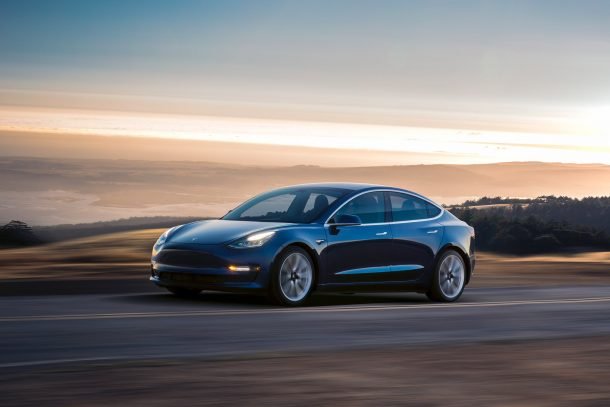Tracking Tesla: As Model 3s Hit the Streets, There's a New Way to Check Musk's Pace of Production

Since beginning production of the Model 3 last summer, Tesla has dialed back production targets like a thermostat in the springtime. The electric automaker’s first goal of 5,000 units per week by the end of the year passed as the champagne corks flew on New Year’s Eve, but by that time Tesla had already pushed it back to the end of Q1 2018.
Amid troubles on the assembly line, that target eventually moved to the end of the second quarter of this year, a goal that still stands.
Just how many Model 3s is Tesla cranking out these days? The company only reports deliveries on a quarterly basis, making it hard to get a firm read on the company’s exact output. One publication hopes to change that.
Enter the Tesla Model 3 Tracker, courtesy of Bloomberg News.
As of February 14th, Bloomberg calculates that the Fremont, California factory has cobbled together 7,341 Model 3 since production began, and can now boast — or at least claim — a production rate of 1,025 vehicles per week.
Between the mid-summer production start and December 31, 2017, Tesla delivered 1,770 Model 3s. Things are clearly ramping up, though perhaps not as quickly as CEO Elon Musk would like. So, how did Bloomberg land on these figures?
The tracker keeps tabs on the Model 3 as best it can via “data from official U.S. government resources, social media reports, and direct communication with Tesla owners,” the publication states. There’s also two methods at work.
The first tracks VIN registrations at the National Highway Traffic Safety Administration. By compiling batches of VINs registered with the agency, then factoring in the intervening time period, a rough production rate arises. Rough, because automakers can register as many VINs at one time as they please. The second method takes things into the real world.
As Tesla owners and fans often display a great predilection for talking about all things Tesla on social media sites, blogs, and forums, VIN data often becomes available from photos posted to these sources. Other VINs are reported directly to Bloomberg, giving it a better sense of the pace of deliveries. (The publication’s constantly updating page offers an easy way to submit.)
Quarterly delivery data posted by Tesla will find its way to the page, retroactively refining the estimate. So, why did Bloomberg go to the trouble? For the same reason why we’re interested in it. Lofty, frequently changing promises from a rarely profitable company attempting something never done before require a dose of reality once in a while.
The tracker, if you choose to view it this way, is as much about measuring the worth of Musk’s words as it is about measuring Model 3s in the wild.
[Image: Tesla]

More by Steph Willems
Latest Car Reviews
Read moreLatest Product Reviews
Read moreRecent Comments
- Jbltg Nope.
- ChristianWimmer This would be pretty cool - if it kept the cool front end of the standard/AMG G-Class models. The front ends of current Mercedes’ EVs just look lame.
- Master Baiter The new Model 3 Performance is actually tempting, in spite of the crappy ergonomics. 0-60 in under 3 seconds, which is faster than a C8 Corvette, plus it has a back seat and two trunks. And comparable in weight to a BMW M3.
- SCE to AUX The Commies have landed.
- Arthur Dailey The longest we have ever kept a car was 13 years for a Kia Rondo. Only ever had to perform routine 'wear and tear' maintenance. Brake jobs, tire replacements, fluids replacements (per mfg specs), battery replacement, etc. All in all it was an entirely positive ownership experience. The worst ownership experiences from oldest to newest were Ford, Chrysler and Hyundai.Neutral regarding GM, Honda, Nissan (two good, one not so good) and VW (3 good and 1 terrible). Experiences with other manufacturers were all too short to objectively comment on.



































Comments
Join the conversation
I think most of them are in Southern California, i see lots in San Diego.
I saw one at the dealer in Chicago. The back seat is a total joke - the floor is so high a 6 footer's knees are in his chest. In trying to make the car pretty, and still have a battery under the floor, they've created a not very practical car. Feels jokey.